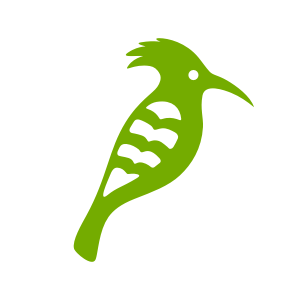
Our Observation of the Week is this Tiputinia foetida plant, seen by @pbertner in Peru - hundreds of kilometers outside its previously known range!
In addition to sweet photos of a decidedly odd plant, this observation represents the power of iNaturalist’s global community, where a Canadian photographer posted the first record in Peru of a plant previously known only in Ecuador, that was identified by a botany enthusiast in Germany.
“I knew it [was Tiputinia foetida] right away,” Kai-Philipp Schablewski (@kai_schablewski, iNat’s top identifer of plant observations in South America) told me. Kai had read the original description of this plant from 2007, and until the photo you see above, it had only been found in northeastern Ecuador. “This observation from Peru is a record of a Tiputinia plant that was found nearly 2000 km south of the [known] distribution area in Ecuador,” Kai says. “The question now is if this is a disjunct distribution or if the plant has been overlooked in some parts in between.”
Kai, who resides in Marburg, Germany and studied botany for a time in college, has “always loved plants with special survival strategies such as cacti, alpine plants, parasitic plants, mycoheterotrophic plants, ant plants, or bromeliads.” While he hasn’t visited South America, he finds its flora amazing and does what he can to help identify observations there. And as a curator, he has added distribution maps, new taxa and more in an effort to keep iNat’s taxonomy up to date.
I did this because I want iNaturalist to become a more powerful global tool for nature conservation and science...I hope I am able to make a small contribution to nature conservation with my help on iNaturalist so that more species can be saved through this difficult time of environmental destruction in that we are in.

If you think Tiputinia foetida (the only known member of its genus) looks a little strange for a plant, you’re right - it’s parasitic, which means it does not photosynthesize and thus lacks chlorophyll. Yet unlike many familiar parasitic plants (eg most species in the Orobanchaceae family), its host is not another plant, but a fungus! That’s right, it’s a myco-heterotroph and the only part of it you’ll see above ground is its flower and related structures.
As you might suspect from its name, this plant’s flower emits a “foul, rotten fish-like odor” to which many insects are attracted, “including flies, beetles, ants, and small wasps.” (Woodward, et al. 2007) It’s not known which if they are pollinators, but it does seem likely. There are even a few insects in Paul Bertner’s photos of it here on iNaturalist.
For his part, Paul (who came across the Tiputinia foetida while photographing army ants) says “I'm rather terrible at taxonomy.
However, I spend a large amount of time in the field, both day and night...Despite having difficulties with discerning closely related species, I have a good overall idea of rainforest composition such that when I come across something new or different, I can generally recognize its importance, if not actually identify it...I only learned of [this plant’s] importance after posting here to iNat.
In addition to getting ID help (“I have a large number of insect photos from the tropics which could serve as a valuable database online, however, they are only as good as peoples' ability to find and then subsequently to find useful.”), Paul says iNat has helped him network with amateur and professional biologists more broadly.

And although he has studied cell biology and genetics, Paul (above, placing a camera trap above a peccary wallow) tells me that his current interest is tropical rainforest photography, “especially [that of] insect behaviour.” It’s brought him to tropical areas of the Americas, Africa, and Asia, and remarkably Paul is a Stage IV testicular cancer survivor, having had both hip and shoulder replacement surgeries. As he writes in his Smugmug bio,
I live life now, as only one who has known hopeless hospital wards, and mortal sufferings may. I see beauty in the mosquitoes’ exquisitely crafted stylets. I feel a kinship with the cockroach, a resilient survivor, and beggary, basking in nature’s majesty. To offer but a keyhole’s view onto this world is to share my life’s story, from plagues to polliwogs, imprinted onto every pixel of every picture I take.
- by Tony Iwane. Some quotes have been lightly edited for clarity.
- In addition to his SmugMug page, Paul is also on Flickr.
- Take a look at our blog post about a fiddler crab observation which also represented a large range extension.
Correction: this blog post originally said the plant was found "thousands" of kilometers from its known range, but it's more in the neighborhood of 1,500 kilometers, so I've changed it to "hundreds of kilometers". Thanks for double-checking, @muir!




















